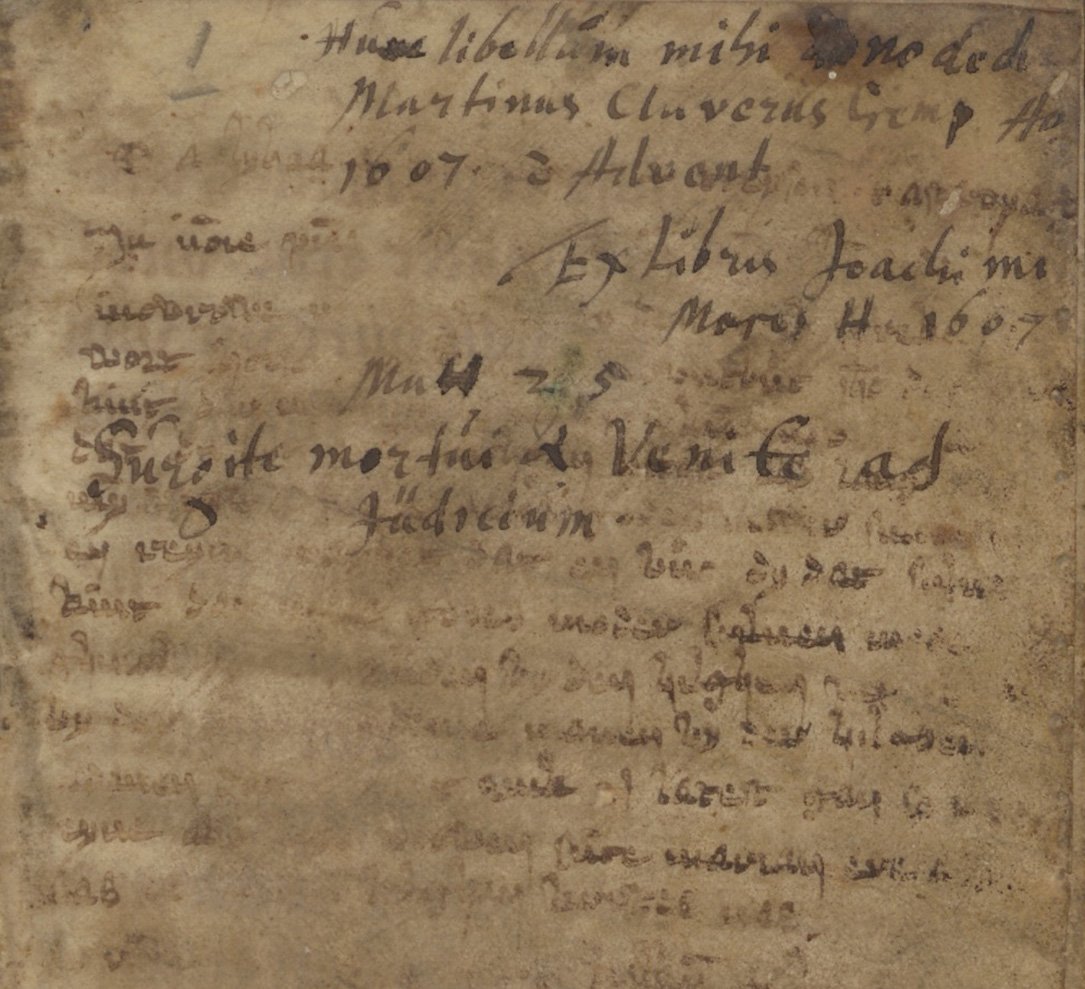Medical prescriptions
Don’t judge a book by its size: a remarkable pocketbook
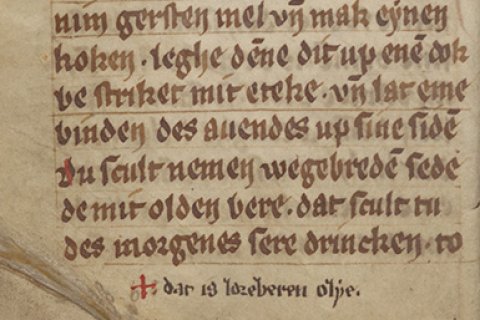
It may look like an uninteresting pocketbook, but Ms. 1355 of Utrecht University Library contains a number of interesting elements that make for valuable research material. Unfortunately, it has rarely been researched by Dutch researchers, perhaps due to its deceptively uninspiring appearance or the Northern Low Saxon dialect. This did not deter a handful of German scholars, but the dialect is not difficult to grasp for those who read, write and speak Dutch. This doctor’s book is a treasure trove if you look a little further. Don’t judge a book by its cover – or its size – but allow us to inspire you with this short exposition of this pocketbook’s most remarkable features.
Small manuscript
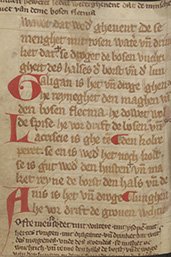
Most notable is this manuscript’s size. It easily fits in the palm of one’s hand, or in one’s pocket. This small manuscript, produced around 1400, measures 11 by 9 centimeters and is almost 4 centimeters thick. Its small size is quite useful for a doctor calling on his patients. A small encyclopedia containing the knowledge and information most used in the practice of medicine makes the job easier. That is exactly what this tiny volume contains. It may then be categorized as a vademecum: literally meaning ‘go-with-me’.
In general, one may distinguish between three kinds of medical manuscripts. The first is the relatively large and impressive compilation manuscript, often containing specialized texts that served as works of reference for medics or students of medicine. The second is a ‘house book’, used by those who hadn’t been educated in medicine to glean knowledge, dietary regimens and astrological counselling. The third is the vademecum, the small, handy book with relevant material for calling on patients.
Content
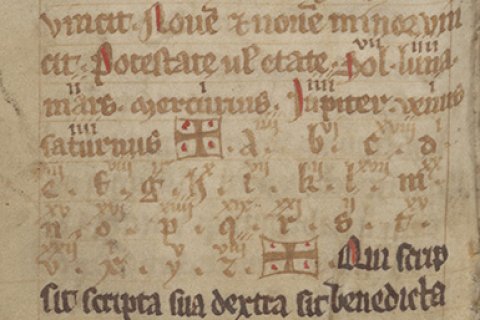
The vademecum had to be a practical work in every sense of the word. Ms. 1355, provisionally titled ‘Geneeskundige voorschriften’ (Medical prescriptions), contains a number of helpful texts, among which: basic knowledge, descriptions of herbs, their function and application, recipes and astrological reference material. For example, it features a recipe for a ‘gout ointment’ (116v-117r): sage, rue and savin juniper are ground and mixed with clarified butter. This is left until it turns green and is then sifted through a clean cloth. It’s only one of the many recipes contained in this book.
What follows is an overview of the manuscript’s contents:
Fol. 1r - 33r: ‘Small Middle Low German doctor’s book’
Fol. 33v - 99v: ‘Utrecht doctor’s book’, containing;
Fol. 33v – 66v: Collection of recipes
Fol. 66v – 79r: Low German herbal treatise
Fol. 79r – 85r: Collection of recipes
Fol. 85r – 87v: Regimen sanitatis (Latin)
Fol. 87v – 91r: Utrecht prescriptions by month (Latin)
Fol. 91r – 93r: New Year’s forecasts
Fol. 93r – 94v: Disease lunarium
Fol. 95r – 96v: Day lunarium
Fol. 96v – 99v: Name prognosis (Latin)
Fol. 100r – 101v: Medical text
Fol. 102r – 110v: Recipes
Fol. 110v – 111v: (Bloodletting) lunarium
Fol. 112r – 113v: Reprobate days
Fol. 113v – 122v: Recipes
Fol. 123r – 123v: Medical treatise (incomplete; 15th-century addition)
Fol. 125r – 125v: Vogelparlement (15th-century addition)
This list alone raises questions, and it would be rewarding to thoroughly examine the manuscript, perhaps alongside other similar works. Comparative research could provide answers to questions like who the users of this manuscript were, why these specific texts were considered useful or which knowledge was most referenced or applied. The edition of Agi Lindgren from 1977 offers a good starting point. To illustrate, we will highlight some aspects of this doctor’s book that are worth elucidating.
Additions
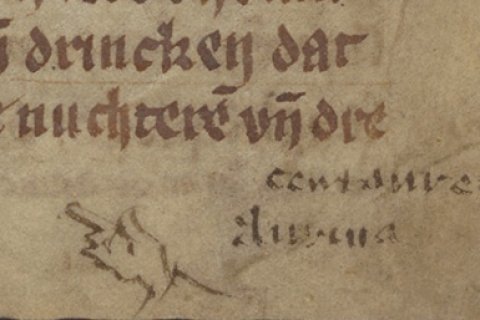
The manuscript is written by five different people. Nevertheless, it appears to have been compiled in a relatively short time span. It is not, however, a true composite manuscript. It appears that the manuscript was not necessarily compiled out of individual texts, collected over time. Multiple hands can be found within one text. Additionally, there are interruptions in the text that are not logical and seem to point out faults that are the result of binding or perhaps even mistakes in writing and copying.
Most additions to the manuscript have been made shortly after its completion. By far the most marginalia can be found in the herbal treatise found on fol. 66v-79r. For instance, someone wrote that hyssop is effective for coughs and that cumin reduces sweating.
The little book seems to have been used by medics for a relatively short period of time. In 1609, it was given by the priest Martinus Cluverus to the young Joachim Morsius from Hamburg, who would later become a well-known and controversial scholar. Presumably, the work was left in the Netherlands during one of his journeys. In 1884 it turned up at a book auction. What happened to it in the meantime is unknown.
In the back of the book are some fifteenth-century additions. One is of a medical nature, the other is a version of a didactic text known as the Rat der Vögel: the parliament of birds. The wren seeks advice from all other birds on good leadership and a virtuous life. Every bird offers a piece of advice, a code of conduct that everyone should adhere to. Did the fifteenth-century user of the manuscript add this to remind himself to preserve his integrity in practicing medicine? We can only guess.
Author
Linda Brakenhoff, June 2017
